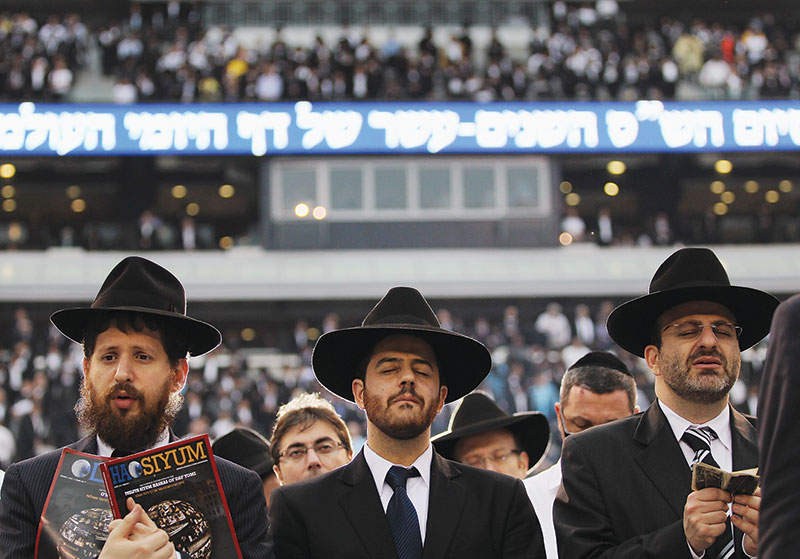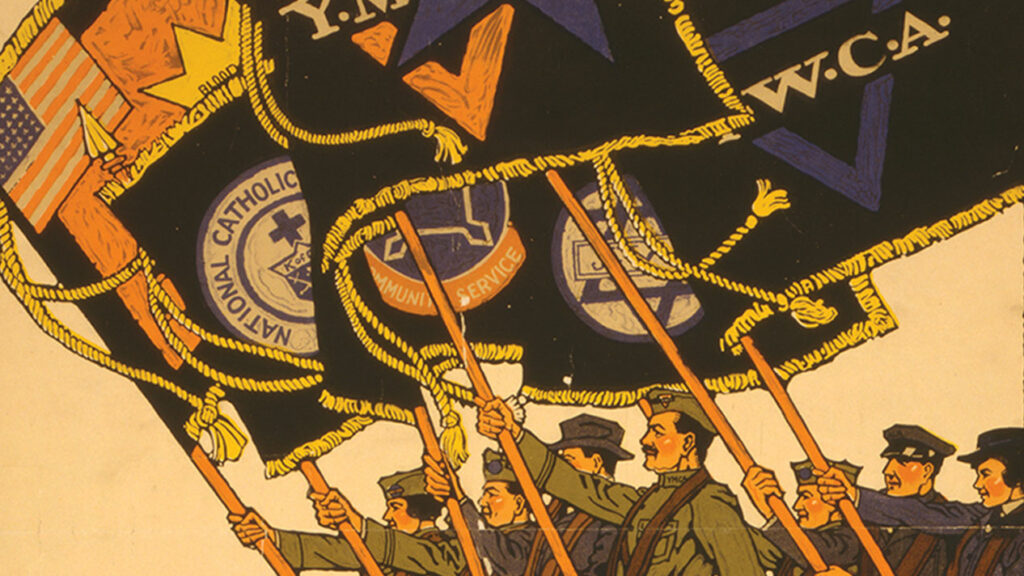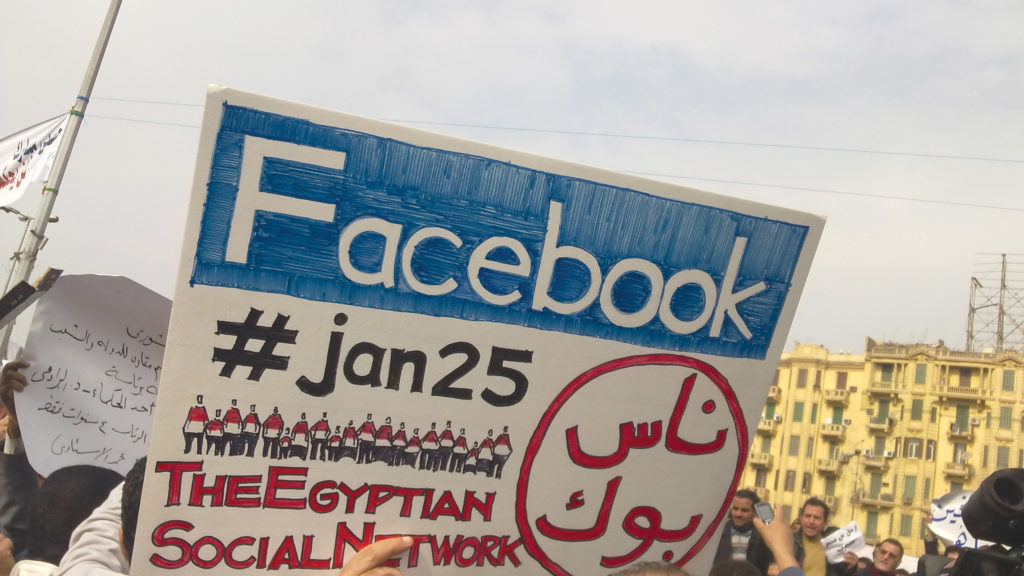Swimming in an Inky Sea
In August 1923, at the first parliamentary meeting of the Orthodox group Agudath Israel, in Vienna, Rabbi Yehuda Meir Shapiro of Poland inaugurated the Daf Yomi learning program. Shortly thereafter, thousands of religious Jews began the project of studying one full page (front and back) of Talmud a day for seven and a half years, the amount of time it takes to complete 37 tractates—2,711 pages—of the Babylonian Talmud. Ambitious Torah learning projects were nothing new for Eastern European Jews; the difference here was the scope and pace of the project, as well as, perhaps, its democratic spirit: the rabbinic canon for everyone, or at least all religious Jewish males.
When Rabbi Shapiro proposed the Daf Yomi project, detractors suggested that such a course of study would necessarily be both cursory and superficial. Full-time yeshiva students rarely study the daf, instead diving deep into specific tractates. Yet for tens of thousands of Jews all over the world, many of them busy with work and family, Daf Yomi study has become an integral part of each day.
For Ilana Kurshan, a young editor recently uprooted from New York to Jerusalem following a man she would marry and divorce in a year’s time, Daf Yomi study began as a way to move forward: “If every day I turned a page, then eventually a new chapter would have to begin.” As her lyrical and erudite memoir If All the Seas Were Ink illustrates, the practice became an unexpected source of beauty and inspiration. Kurshan, a hyper-literary, ideologically egalitarian, hopeless romantic (in her words), doesn’t fit the typical profile of a Daf Yomi participant. She started her project at the suggestion of a running partner, a friend who enjoyed “hanging out in bars, reading paperback thrillers, and staying in shape,” but who, in an only-in-Jerusalem moment, tossed off a casual “Did I tell you? I’ve started learning a page of Talmud a day” as they were running uphill toward the Knesset.
Kurshan approached her Daf Yomi study as a young scholar, a translator, and a “lover of texts.” Starting with tractate Yoma, her Gemara fills up with marginal notes indicating points of confusion, notes of surprise, boxed summaries, and references to books she’d read as an undergraduate at Harvard and as a graduate student at Cambridge. Yet her induction into the intricacies of traditional Jewish learning ends up providing her with more than a self-help regimen for a broken heart, more than the thrill of intellectual achievement, but with a “tree of life” to which she can cling through her sadness and isolation while living in Israel with few friends or family. Kurshan’s seven years of Talmud study also guide her through a second chance at love and the birth of three children with her new husband. If All the Seas Were Ink is an intricately written captain’s log of her voyage through the Babylonian Talmud, from tractate Yoma through tractate Shekalim.
Kurshan’s memoir gives us insightful contemporary readings of talmudic passages while demonstrating how life can accrue added richness when set against the backdrop of the Talmud. Kurshan shows us the mutually dynamic relationship between life and text. Thus, in discussing Yoma, which deals with the highly involved priestly Temple rituals of Yom Kippur, she frames it in the language of lost love:
[T]he Talmud is often regarded as a highly unromantic text, particularly when it comes to the transactional nature of marriage. But this is only because, for the rabbis, the object of longing was rarely wives, or even other women. Rather, when the rabbis wax most poetic, they are frequently speaking about the Temple, which was destroyed generations before the Talmud’s inception.
Kurshan’s first marriage, like the Second Temple, ended in flames. These flames are both figurative and literal, since there was an actual brushfire in the struggling couple’s backyard on one particularly tense Shabbat evening. Kurshan shares a famous talmudic passage to illuminate the experience. Taken from the tractate Sotah, it revolves around the fact that the Hebrew word for man, ish, and the Hebrew word for woman, isha, are essentially the same except for the presence of the letter “hey,” traditionally representative of God’s name. Without the “hey” both names share the same Hebrew letters as aish, which means fire. According to the Talmud, “If a man and woman’s union has merit, the divine Hey will reside between them; if not, a fire will break forth and consume them.” (Sotah, 17a)
As the days of learning cycle into months and years, the texts Kurshan is immersed in both serendipitously reflect and set off her experiences. A work trip to the international book fair in Frankfurt while she is ensconced in the middle of the tractate Sukkah, which literally means “booth,” provides a surreal vision in which the booksellers’ booths become the Israelites’ Sukkot in the wilderness. At a smoke-filled private reception for a German publisher, the writer finds herself dreaming “of the clouds of God’s glory that accompanied the Israelites throughout their desert wanderings.” From a talmudic debate between Rabbi Akiva and Rabban Gamliel about the halakhic permissibility of building a sukkah on a ship (Sukkah, 23a) Kurshan jumps into a meditation on her own instability and sense of rootlessness. Fortunately, Rabbi Akiva rules in support of Kurshan’s precarious position. Even Matthew Arnold is roped into the conversation; in “Dover Beach” the world lacks certitude, and yet, “[t]he sea is calm tonight.” Reading these reminiscences, it is sometimes hard to evaluate where memoir ends and imaginative re-enactment begins. One suspects that for Kurshan, who has become comfortable in the vivid and highly allusive literary world of the Talmud, the difference is immaterial.
Kurshan’s iconoclastic approach to Talmud study, which would likely be more at home in a University of Iowa writing workshop than an Agudath Israel convention, means that her communities of fellow Daf Yomi-ites are ephemeral, when they exist at all. When Rabbi Meir Shapiro invented the Daf Yomi project, he imagined it as a project of unification:
What a great thing! A Jew travels by boat and takes gemara Berachot [the first volume of the Talmud] under his arm. He travels for 15 days from Eretz Yisrael [the land of Israel] to America, and each day he learns the daf. When he arrives in America, he enters a beit midrash [study house] in New York and finds Jews learning the very same daf that he studied on that day, and he gladly joins them. Another Jew leaves the States and travels to Brazil or Japan, and he first goes to the beit midrash, where he finds everyone learning the same daf that he himself learned that day. Could there be greater unity of hearts than this?
Kurshan quotes this speech approvingly at the outset of her memoir and is touched by this vision of Jewish unity. Yet she also likens herself to the Irish airman in W. B. Yeats’s famous poem, who flies according to a “lonely impulse of delight.” When Kurshan joins an early morning Daf Yomi study group in an Orthodox synagogue in Jerusalem, she is welcomed courteously by the other participants, yet when the men proceed to pray Shacharit together after they study, she heads to the local pool.

Kurshan’s solitary pursuit is underlined in the chapter corresponding to tractate Hagigah, which deals with the commandment to make a pilgrimage to Jerusalem on the three major holidays. Standing in line to check in on an El Al flight from London to Israel on the eve of Passover, she describes herself as surrounded by “flocks of Hasidic men in black and white who were squawking through their beards and flapping their dress bags in a frenzy of preflight excitement.” Although this may be a subtle nod to the aviary nature of some of the sacrificial offerings described in Hagigah, or to the very fact of flying on an airplane, one finds it hard to believe that there is any other ethnic or religious group that she would ever so blithely characterize as an animal species (in this case, penguins). As the line moves slowly, Kurshan, like the men around her, opens her Gemara to study:
Absorbed in my learning, I was somewhat oblivious to what was going on in front of and behind me. Perhaps I ought to have noticed the flurry among the Hasidic men, who peered out over the tops of their books and glanced in my direction. Perhaps I should have listened to them whispering in Yiddish and noticed the nervous glances exchanged beneath raised eyebrows. But my head was buried in those matters that are wondrous and concealed and hidden.
Ben Sira’s quote about the wondrous and concealed and hidden is on the page before her, and Kurshan imagines the men around her quoting approvingly its last line—“Examine that which is permitted to you; you have no business with hidden matters”—as confirmation that she has “had no business studying Talmud.” Even here, Kurshan feels a twinge of the connection Rabbi Shapiro hoped Daf Yomi would create among Jews. Once on the flight, many of her fellow passengers open the same talmudic volume. Catching the eye of one of them who she seems to think is looking at her with suspicion, she remarks, “I could only think about how we were both—at least literally—on the same page.”
Seven and a half years is a long time, and there is a detectable change as the precocious quality of the memoir’s earlier pages transitions to softer tones of humility and gratitude. Throughout her memoir, Kurshan craves fellowship, describing its absence quite movingly. She ultimately finds it in her husband, who becomes her ideal chavruta, or learning partner, as well as in her budding family.
At the outset of the book, Kurshan states that “by the Talmud’s standards, I am a man rather than a woman.” As an independent, self-sufficient modern woman, she can hardly relate to the Talmud’s assumptions about gender, which she regards as “historical curiosities.” Yet toward the end of the book, in her chapter on the tractate Berachot, Kurshan explores the rabbinic treatment of the biblical prayer of Hannah in 1 Samuel, and finds in it a template for her own prayer as a new mother trying to find a time and way in which to address God. In fact, the rabbis of the Talmud turn to Hannah as a paradigm for all prayer. How one squares Kurshan’s earlier statement of “I am a man” with the subsequent delicate unpacking of Hannah’s prayer is left to the reader to resolve.
In her introduction, Kurshan writes that the “Talmud is a text for those who are living the questions rather than those who have found the answers.” Yet Kurshan’s journey into the Daf Yomi helps her make certain religious discoveries:
True, I can’t prove the existence of God . . . Likewise, I cannot explain why following each and every commandment has the effect of making me a better person and the world a better place. But the totality of living a life infused with reverence for God and the study
of God’s Torah has enriched me in ways I can only begin to fathom.
At the end of the book, Kurshan returns, quite appropriately, exactly to where she began: tractate Yoma, as she begins the cycle of Daf Yomi once more. To complete a cycle of Torah or Talmud is always to recognize how much more there is to learn. In reading of her return to Yoma and the
beginning of the cycle, I was reminded of my grandfather, a Holocaust survivor who owned a grocery store and finished the Daf Yomi cycle seven times before he passed away.
Kurshan drew the title of her book from Akdamut, an 11th-century Aramaic poem by Rabbi Meir bar Yitzhak:
God’s eternal glory could not be described even if the heavens were parchment, and the forests quills; if all the seas were ink, as well as every gathered water; even if the earth’s inhabitants were scribes and recorders of initials.
If All the Seas Were Ink is consistently insightful and often profound. Yet the places where it shines most are where it reflects the vastness of life and the depth of Jewish learning that lies beyond its pages.
Comments
You must log in to comment Log In
Suggested Reading
Letters, Winter 2021
Et Tu, Jewish Review?, The Akedah Conundrum, Crazy Rich Mizrachim?, Josephus’s Jonah, and More

Pancho Villa and the Star of David Men
When the Young Men's Christian Association began offering wholesome recreation to soldiers in 1916, Jewish leaders were as as worried about evangelism as they were about bars and bordellos.

Thinking About Revolution and Democracy in the Middle East: A Symposium
Since January of this year, revolution has spread across North Africa and the Middle East with such velocity that predicting exactly what will happen next is probably a fool's errand. In this issue, we have asked seven writers to return to their bookshelves and tell us what books, authors, and arguments they find helpful in thinking through the causes and implications of these surprising events.
Loaves in the Ark
A striking tale of pure faith, divine fiat, and free food from Rabbi Moses Hagiz's

gershonhepner
IF ALL THE SEAS WERE INK
“If all the seas were ink,” a book Ilana Kurshan
has written to describe her studies of daf yomi,
intrigues this poet with whom her name rhymes, called Gershon.
Her Yiddish kop is lovelier than one Salome
desired, helping her to master daily Talmud pages,
a process some for women to this very day forbid.
I find her efforts to keep up with men who were our sages
more admirable that all ithe oceans'n-producing squid
which do not fill the oceans with their ink, restrained
perhaps by God, as women also have for so long been
by men, but only recently about this have complained,
on Talmud texts no less than many Jewish men most keen.
[email protected]